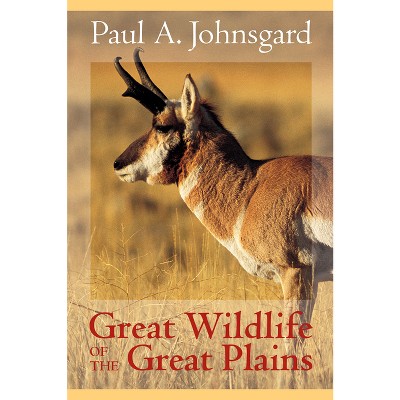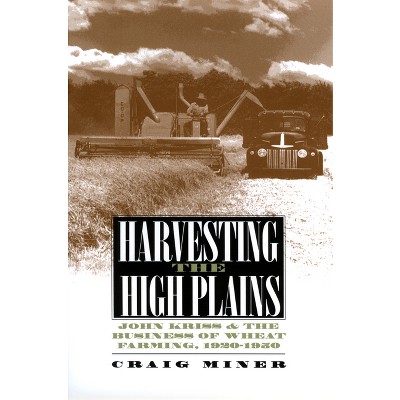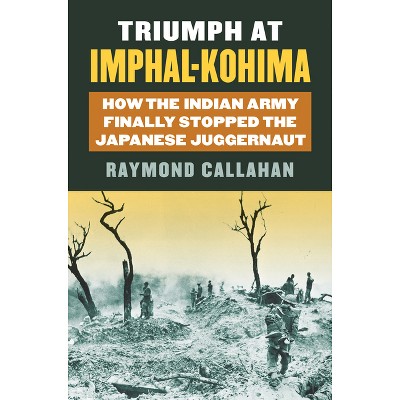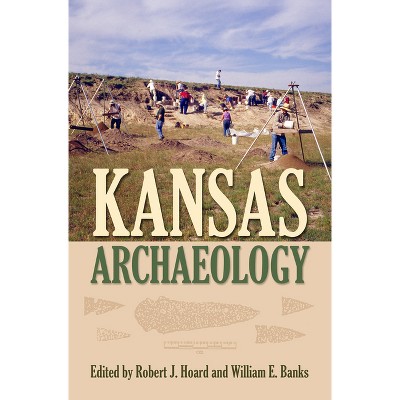About this item
Highlights
- Stretching from the Gulf of Mexico to central Canada, North America's great interior grasslands were home to nomadic hunters and semisedentary farmers for almost 11,500 years before the arrival of Euro-American settlers.
- Author(s): W Raymond Wood
- 522 Pages
- History, United States
Description
Book Synopsis
Stretching from the Gulf of Mexico to central Canada, North America's great interior grasslands were home to nomadic hunters and semisedentary farmers for almost 11,500 years before the arrival of Euro-American settlers. Pan-continental trade between these hunters and horticulturists helped make the lifeways of Plains Indians among the richest and most colorful of Native Americans. This volume is the first attempt to synthesize current knowledge on the cultural history of the Great Plains since Wedel's Prehistoric Man on the Great Plains became the standard reference on the subject almost forty years ago. Fourteen authors have undertaken the task of examining archaeological phenomena through time and by region to present a systematic overview of the region's human history. Focusing on habitat and cultural diversity and on the changing archaeological record, they reconstruct how people responded to the varying environment, climate, and biota of the grasslands to acquire the resources they needed to survive. The contributors have analyzed archaeological artifacts and other evidence to present a systematic overview of human history in each of the five key Plains regions: Southern, Central, Middle Missouri, Northeastern, and Northwestern. They review the Paleo-Indian, Archaic, Woodland, and Plains Village peoples and tell how their cultural traditions have continued from ancient to modern times. Each essay covers technology, diet, settlement, and adaptive patterns to give readers an understanding of the differences and similarities among groups. The story of Plains peoples is brought into historical focus by showing the impacts of Euro-American contact, notably acquisition of the horse and exposure to new diseases. Featuring 85 maps and illustrations, Archaeology on the Great Plains is an exceptional introduction to the field for students and an indispensable reference for specialists. It enhances our understanding of how the Plains shaped the adaptive strategies of peoples through time and fosters a greater appreciation for their cultures.Review Quotes
"A much needed updating--the first in more than thirty-five years--of Plains archaeology. An excellent reference work that will be useful in both undergraduate and graduate classes that relate to the Plains."--Susan C. Vehik, Associate Professor of Anthropology, University of Oklahoma
"Wood and his colleagues have woven together an admirable tapestry that supersedes Wedel's seminal volume Prehistoric Man on the Great Plains."--R. Bruce McMillan, Director, Illinois State Museum
"This book covers more than 12,000 years of Native American and Euro-American occupation of the Great Plains. The contributors are recognized experts, including several with international reputations. With its excellent summaries, discussions of important archaeological sites, and extensive bibliography, it can be used in any university course dealing with the archaeology of the Great Plains or by general readers with a passionate interest in the Great Plains and its native cultural traditions."--Choice
"A seminal work on Great Plains archaeology. This work examines the rich diversity of cultures and lifestyles that have existed in the region that extends from the Gulf of Mexico into central Canada. Excellent photographs and maps. Highly recommended."--Library Journal
"Anyone interested in the Plains must read this book if they are to understand the depth and complexity of human adaptation to the vast interior grasslands."--Phi Beta Kappa Key Reporter












